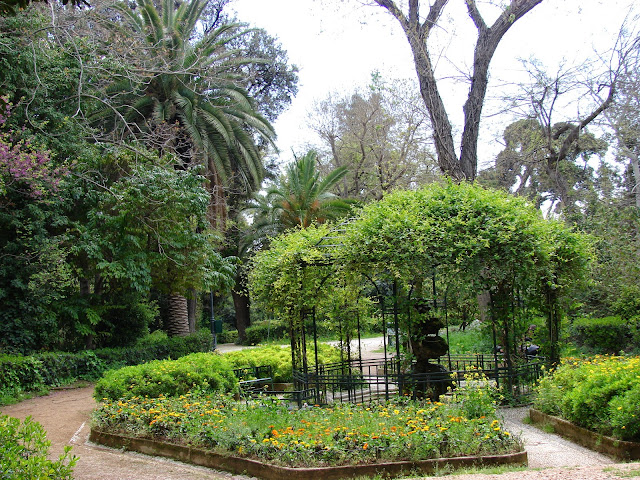Erechtheion was a most sacred place in ancient Athens. Temple has been dedicated not only to the one god but to many gods and heroes honored in Athens. Also Erechtheion has been a shrine of first Athenians kings.
Like others buildings of Acropolis Erechtheion has been built between 421 and 406 BC during the wide reconstruction of Athens after the Persian War. Or better to say that temple has been restored after old Erechtheion was turned into ruins by Persian troops.
According to the Greek legends, Erechtheion was built on a place of bet between Poseidon and Athena for the right to be the backer of the city. Poseidon stabbed his trident and gave to Athenians the source of water while Athena raised the olive tree. Athenians decided that the gift of Athena was more valuable for them and named their city after her.
But the temple itself was named in honor of Erechtheus who was the first king of Athens and it was a sanctuary of Erechtheus and Athena. Also the cult of Poseidon was worshiped here.
It was not easy task to build temple on this place because it’s uneven. But ancient architects did it. Erechtheion had a big cella which has been partitioned into a three rooms. In one of them was keeping the wooden statue of Athena.
It was generally accepted that this statue has been made from sacred olive tree and it was created not by human but by the divine hand of one of the Olympic gods. During the Panathenaic celebrations statue was dressing into the special mantle which was weaved by the young Athenians women. Before the statue always glowed gold lamp.
Beneath the Erechtheion was secret underpass which led to the cave of Acropolis snake. This snake was sacral for Athenians. During the Persian Wars they agreed to leave the city only after they heard that snake left the cave and will follow to them in their exile.
On all sides Erechtheion has been adorned by Ionic porticos. The most wonderful from them was south portico (the Porch of the Caryatids) where columns portrayed dancing women. Today you can see their copies while original Caryatids are kept in Museum of Acropolis.
Erechtheion was most graceful temple of Acropolis. It got the admirations of many ancient philosophers, artists and even kings.
In the Middle Ages Erechtheion served for different purposes. In some period it even was a harem of Turkish rulers in Athens.
It was badly damaged during the War of Independence when Acropolis has been stormed by Turkish troops. In nowadays Erechtheion has been carefully restored. Of course not fully but enough to give you idea how it looked at the Golden Era of Athens.
Today Erechtheion has modern legend related with Caryatids. In 19 century one of them was lost and since the others cry every night and call her. Of course, Acropolis is closed on the nights so you cannot attest it.
And most spectacular pictures of Erechtheion you can make from opposite hills.





































.JPG)
.jpg)











